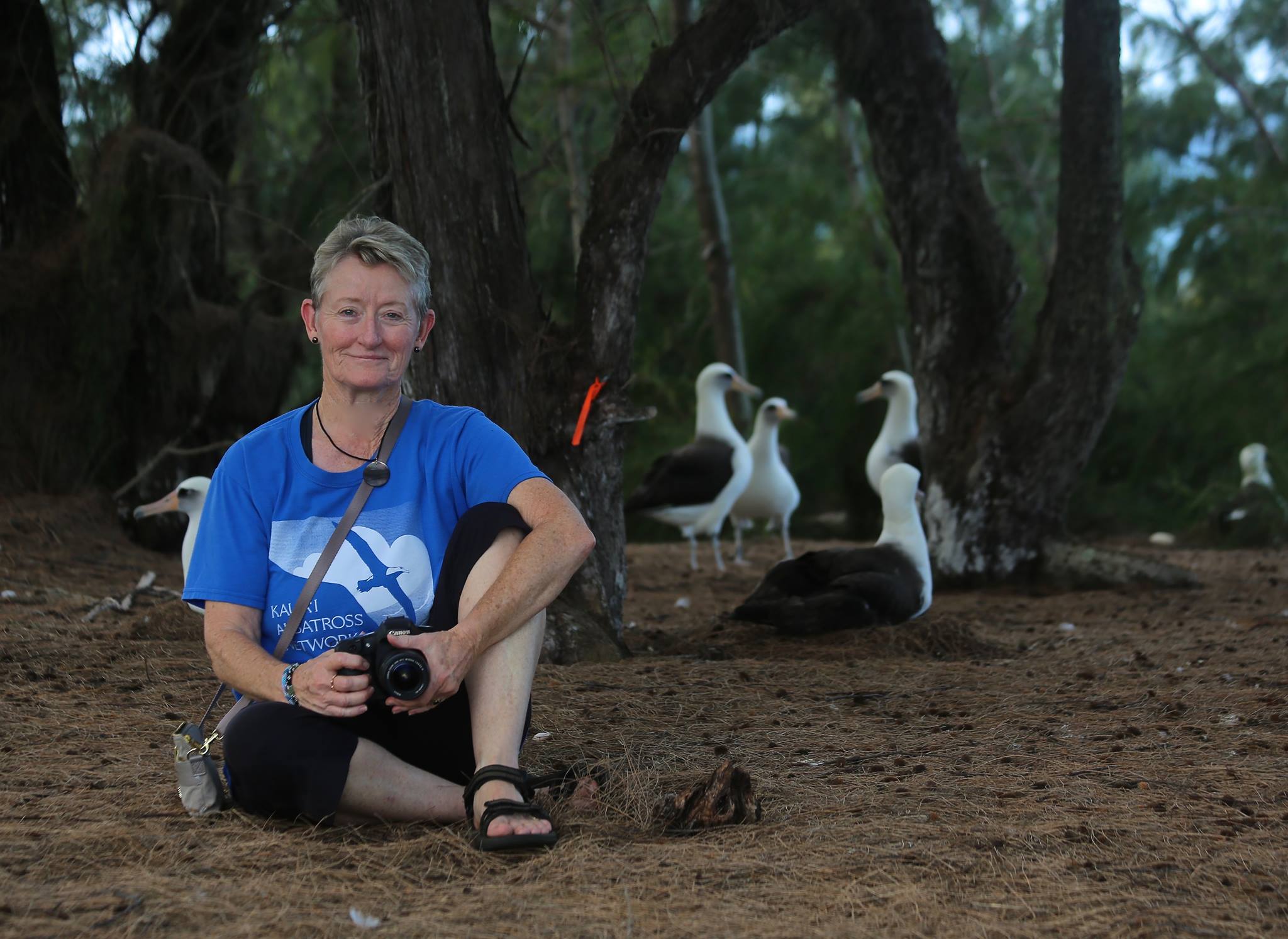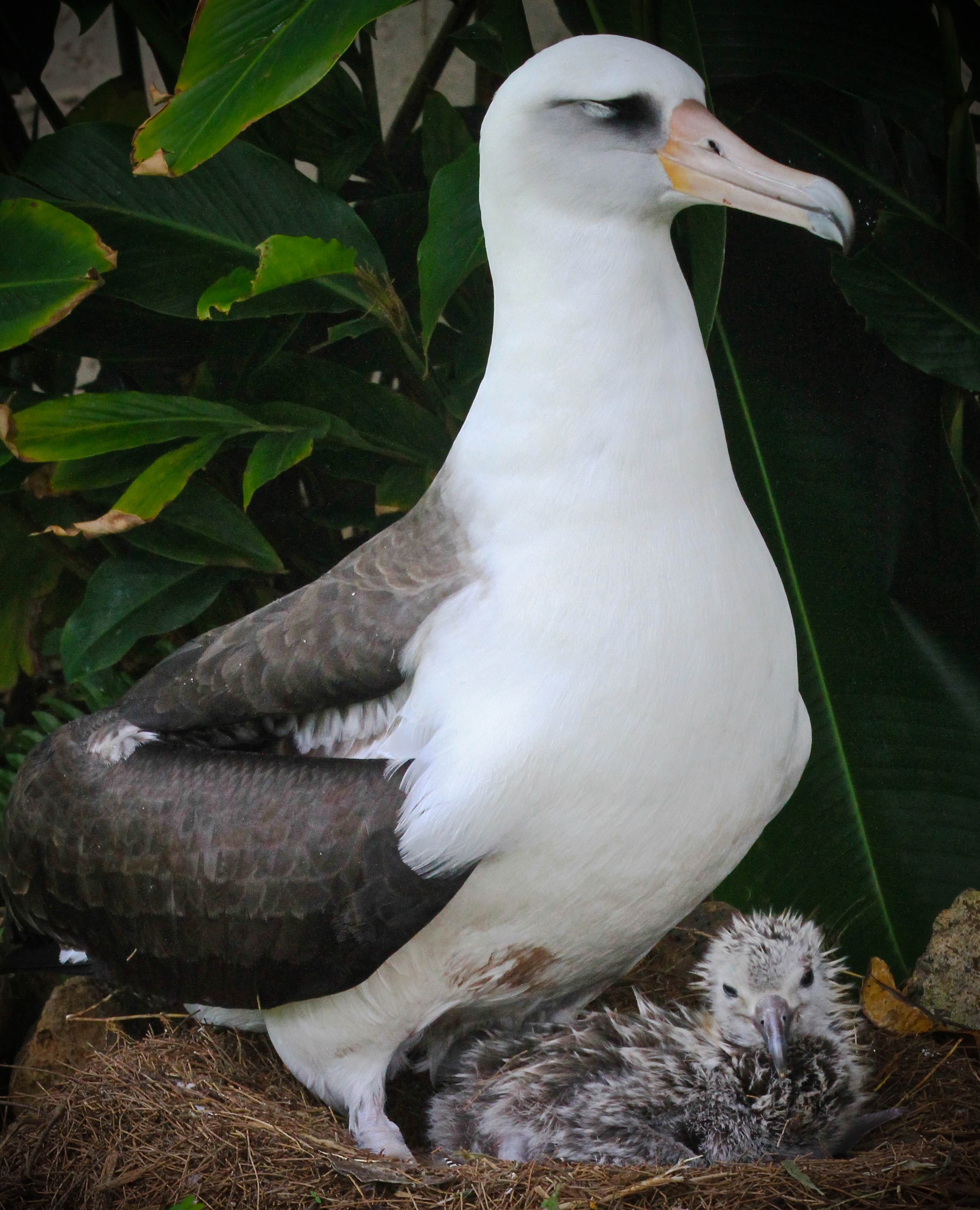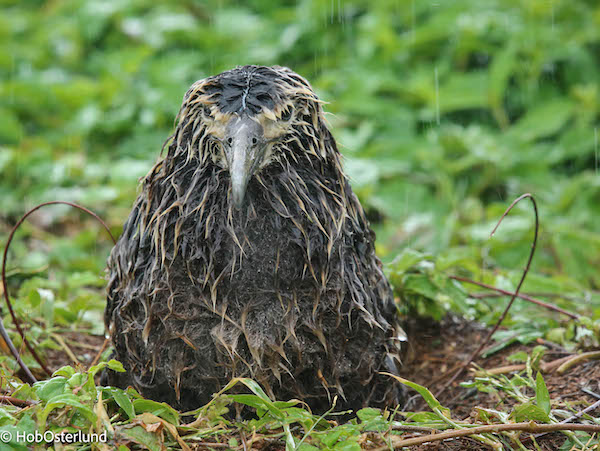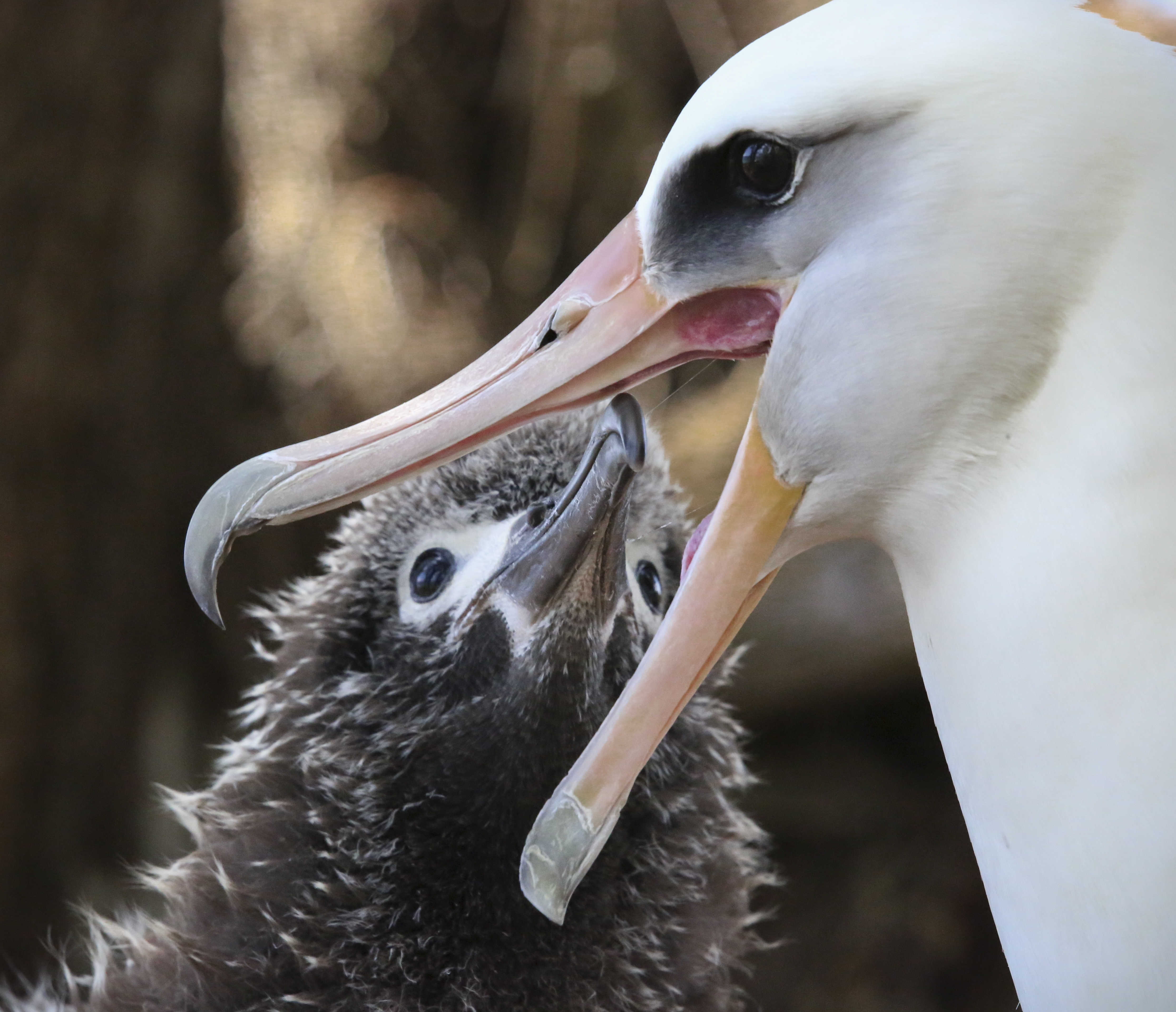A Laysan Albatross pair on Kauai
Author and photographer Hob Osterlund is a resident of the Hawaiian island of Kauai, the founder of the Kauai Albatross Network and a Fellow of the Safina Center. She is also a valued supporter of the Albatross and Petrel Agreement, assiduously helping ACAP Latest News with her photographs and information on interesting stories to post. Fitting then for Hob and her compelling photos of globally Near Threatened Laysan Albatrosses Phoebastria immutabilis to be the second in a new occasional series that features photographs of the 31 ACAP-listed species, along with information on their photographers.

Hob Osterlund with some of her photographic subjects
Hob Osterlund writes to ACAP Latest News:
“Many years ago when I was a student at Cal-Berkeley, I declared an individual major called “Ecological Geography.” My focus allowed me to take a wide range of courses, including topics related to wildlife biology and ornithology. For my senior thesis I spent a summer backpacking in the Sierra Nevada range in California, specifically at a place called Mineral King. At the time the Disney folks were hoping to build a ski resort there, so my topic was describing the negative impact on wildlife such a resort would have. Entirely unrelated to my thesis, the resort was never built [the site now falls within the Sequoia National Park]. But that summer inspired my activism, my commitment and my photography. My devotion to the craft grew deeper in the late 1970s when I happened upon a few Laysan Albatrosses (Mōlī) on the north shore of Kauaʻi. At the time I had no idea they had only recently attempted nesting on the island after perhaps a thousand years’ absence.

A Laysan Albatross guards its week-old downy chick
“As it happens, I am a sixth-generation resident of Hawaiʻi. Back in the mid-20th century, Martha Warren Beckwith, my grandmother’s cousin, wrote a (still-in-print) book called Hawaiian Mythology. It was in that volume that I learned about the Hawaiian concept of ʻaumakua, which can be interpreted as meaning an ancestor who appears in the form of an animal; an ancestor who protects and warns and advises. Such was the kind of connection I felt to the Mōlī here, I began volunteering at the Kīlauea Point National Wildlife Refuge, and at one point the inestimable Beth Flint, PhD, lead a two-day course on how to band Mōlī. The USFWS concept was to have a small team of volunteers who could monitor albatross nesting on private lands. One morning when we were in the field, Beth suggested I start a volunteer organization for Mōlī advocacy. Ever obedient to Beth’s wisdom, I founded the Kauai Albatross Network not long after that. I already knew some private landowners with mōlī on their properties, so I started there."At that time I was working as a Clinical Nurse Specialist/ Nurse Manager at The Queenʻs Medical Center in Honolulu, and ran a Pain and Palliative Care Department. One of my passions in that role was to translate the language of science into a language non-medical people could understand. That passion followed me into albatross advocacy, so I started using social media to share tidbits of the birds’ stories. And of course, the better the photo, the better the story. In 2013 I contacted Cornell Lab of Ornithology, and in 2014 we launched the “TrossCam” which ended up live streaming the lives of several albatross chicks from hatch to fledge for five seasons. During that time I also wrote Holy Mōlī: Albatross and Other Ancestors (Oregon State University Press, 2016, 4th printing, [read ACAP Latest News’ review]), and was able to include more than 20 of my photos. From there I made a brief foray into filmmaking, and Kalamaʻs Journey was the result, winning a Telly Award in 2018.
A conversation is occuring ...
"What’s next? I was asked by Friends of Kīlauea Wildlife Refuges to put together a book called Birds of Kilauea Point. The book was essentially complete in 2020 when COVID-19 hit, and publication will be delayed until we can find a new publisher. In the meantime, what brings me back to photography every day is the detail I can see through my lens that I cannot see with my naked eye. Many bird behaviours happen quickly. When I’m shooting a few frames per second, my brain cannot comprehend all that is going on. When I look at the images later, it’s very common for me to be surprised by something funny, illustrative or glorious. I take photos because I love doing it, and because I want to share what I discover.”

A Laysan Albatross chick gets soaked by rain

A Laysan Albatross chick about to be fed
For more information produced by ACAP on the Laysan Albatross download a detailed Species Assessment and an illustrated Species Summary.
First in this series is the globally Critically Endangered Waved Albatross Phoebastria irrorata by Ken Logan.
With thanks to Hob Osterlund.
John Cooper, ACAP Information Officer, 11 August 2021

 English
English  Français
Français  Español
Español 
